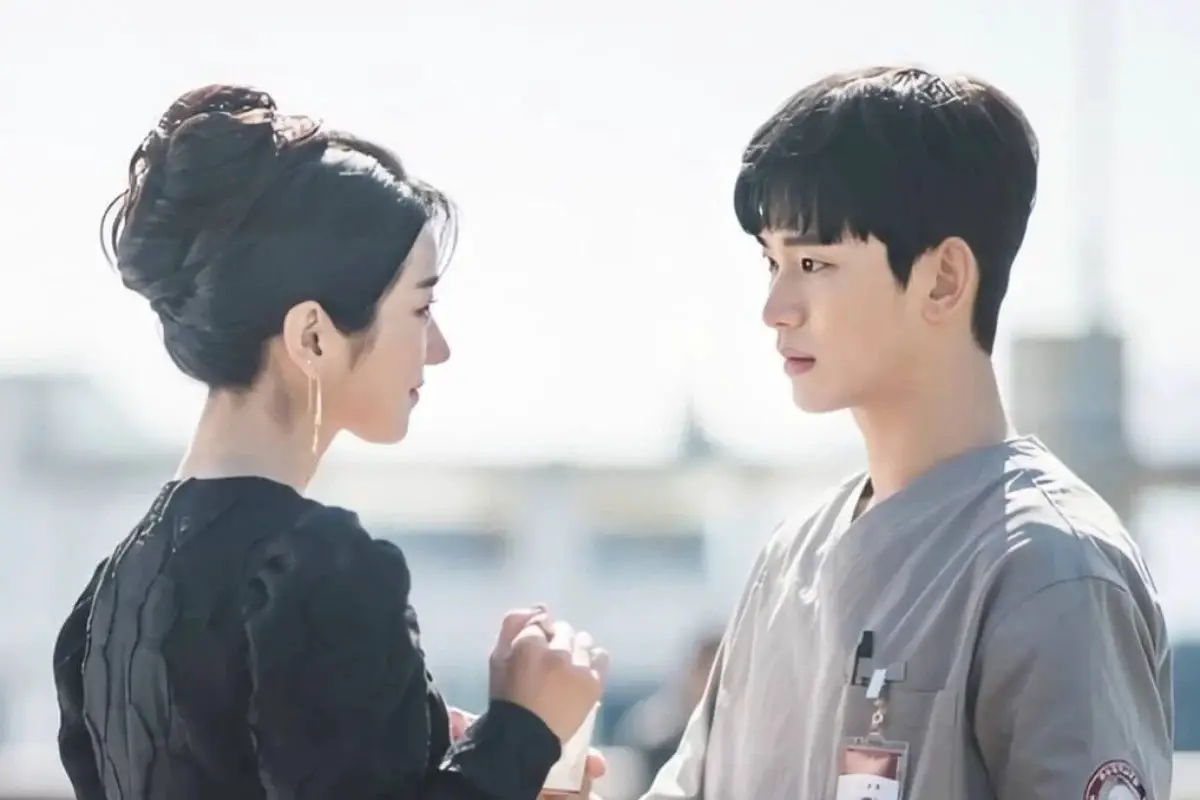Trigger Warning: This article discusses mental health with mentions of suicide.
The macabre undertones of Tim Burton’s classics meet Rapunzel in tvN’s latest Korean drama, “It’s Okay to Not Be Okay.” The series centers around three main characters: caregiver Moon Gang-tae, his autistic older brother, Moon Sang-tae, and a famous writer with antisocial personality disorder, Ko Moon-young. The three of them navigate their own traumas in distinct but connected ways, offering a visceral look at growth and healing. It is currently airing in South Korea and being released on Netflix every Saturday and Sunday.
The show has received praise from audiences for discussing mental health issues, a topic not often talked about in the media, especially in South Korea where there is a large stigma surrounding the subject. A study conducted in 2018 by Osong Public Health and Research Perspectives revealed that South Korea has the second highest suicide rate of the countries that make up the Organization for Economic Co-operation and Development.
Although many factors contribute to the high suicide rate, one factor is a lack of education about mental health. According to an article published by the Korea Biomedical Review, “The ridicule that follows a mental health diagnosis often stems from the fact that people are mostly unfamiliar with, afraid of or downright repulsed by the idea of mental illness.”
“It’s Okay to Not Be Okay” shatters these stigmas in a powerful way.
Gang-tae, the show’s protagonist, is a caregiver at OK Psychiatric Hospital and has been taking care of his autistic older brother his entire life. Gang-tae is an expert at hiding his own feelings and ignoring his emotions, so much so that other characters find his smile off-putting since it never reaches his eyes.
Gang-tae’s character arc revolves around him dealing with the resentment he holds for his mother for constantly relying on him to take care of Sang-tae from a young age. As the show progresses, viewers see Gang-tae get more and more in touch with emotions he’s buried within himself. Occupying himself with Sang-tae has caused Gang-tae to neglect himself and his own growth, and audiences experience his growing pains with him.
Sang-tae, Gang-tae’s older brother, is kind, honest and a brilliant artist. His love for his younger brother is incredibly endearing and clear. Their relationship is a heartwarming and enjoyable aspect of the show. Unlike other depictions of characters with autism, which display harmful stereotypes, Sang-tae is multifaceted. He has passions, forms relationships with the people in his life and wants to take care of his younger brother.
Sang-tae is able to develop as an individual through his love for art. The director of OK Psychiatric Hospital calls upon Sang-tae to create a mural for the psychiatric ward, giving him authority and free will over his own project. He is hired at a pizzeria to draw caricatures for customers. Moon-young hires him as an illustrator for her children’s books. Through these roles, Sang-tae is able to develop separately from his younger brother. Despite the show only being 12 episodes in, Sang-tae shows clear growth, leaving viewers anticipating how he continues to develop, especially taking into account his relationship with his younger brother.
Moon-young is a popular children’s book writer who does not believe in fairy tales. She is diagnosed with antisocial personality disorder, a mental condition that is characterized by patterns of manipulating or exploiting others with no remorse, recklessness and more. She is often cold and uncaring and engages in dangerous behavior.
Moon-young’s storybooks, which delve into trauma with painful and blunt prose aimed at young children, allow viewers to relate to her characters and thus her reality too. Such depictions make Moon-young, who struggles with empathizing with others and being kind, more relatable and likable to audiences. The line between her pain and her characters’ pain is nonexistent, leaving readers deeply connected to her and her struggles. And as episodes continue to premiere, viewers are able to see how she learns to relate and empathize with those around her.
Most of “It’s Okay to Not Be Okay” takes place in the OK Psychiatric Hospital, where Gang-tae works. Unlike most depictions of psychiatric wards, which show them as scary, dark and dreary places, the OK ward is cheerful and bright. Each hallway is lined with windows that offer a view of the ward’s yard filled with colorful flowers. The staff genuinely care about their patients, forming bonds with each of them. In a show with many heavy themes, the ward serves as a beacon of hope. It reminds viewers of the show’s title in a clear way, telling them “It’s okay to not be okay.”
Another setting of the show is Moon-young’s childhood home, a large estate with cobwebs in every corner and a dark shadow looming over it. The home serves as a metaphor for the trauma that Moon-young experienced within its walls. As she grows and is able to heal from her trauma, often through forming bonds with other characters, the house transforms. The dark and dreary halls soon become filled with light. Moon-young opens the doors to her heart and lets light in, both metaphorically and literally. What once represented hurt and heartache is a symbol of growth.
The charm of “It’s Okay to Not Be Okay” lies in the intimate relationship viewers are able to have with the characters due to the way their traumas are reconstructed. Not only do viewers know who each character is as a person, but they come to understand why they are that way. The sharp focus on the theme of mental health, especially in a society where mental health is highly stigmatized, makes the show groundbreaking.
“It’s Okay to Not Be Okay” preaches its title impeccably. Each character, even the ones who appear to be completely indifferent and happy on the outside, is struggling in one way or another. And that’s okay.

















